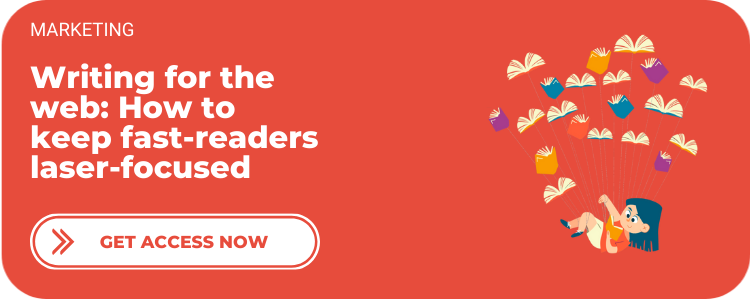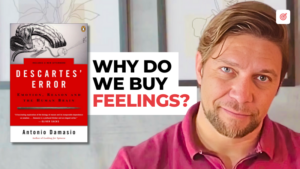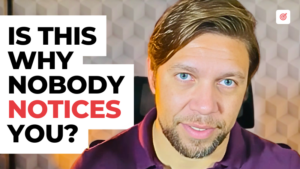Nothing generates more ROI for any brand these days than Email Marketing.
- It’s cheap.
- It’s scalable.
- It’s relational.
But to make all that possible, we must break the first line of defense, the email subject line.
As any other type of titles, email subject lines are like parachutes.
If they don’t get opened, everything is lost.
In this video, we’re going to learn 4 new copywriting techniques to craft subject lines that catch attention and compel action.
But before we get into it…
Let’s dive in.
Copywriting Example 4 – Pat Flynn: She Launched Her Podcast in a Month
What can we learn from this copywriting example?
Copywriting Technique #8: Social Proof
Write this down:
Word-of-mouth is the most powerful force of business growth.
That’s because people tend to trust other people's recommendation more than any company's advertising.
By saying "She launched”, Pat Flynn is using Social Proof as the main component of his sales pitch.
And what is Social Proof, exactly?
Social Proof is a testimonial based on actual results accomplished by previous clients.
Social proof shows to your readers how the other side of a purchase looks like by looking at the results of people that have bought before.
Why is that so powerful?
Because making a purchase is always a risk. It requires 3 components that people don’t want to waste:
- time,
- money,
- and energy.
If the purchase decision leads to expected outcomes, that becomes an investment of those 3 aspects.
However, If the purchase decision leads to unexpected outcomes, that becomes a waste of those 3 aspects.
Time, money, and energy.
Presenting the outcome of people that already went through the process your prospects are considering, decreases the tension of making that purchase.
By saying “she launched”, Pat Flynn is using Social Proof to grasp the interest of his email subscribers.
It’s important to notice how he begins the email subject line with that expression to grasp people’s attention.
But let me warn you: authenticity is key here.
Do not use fake data as social proof. That will backfire and hurt your brand over time.
To create customer testimonials to use this technique, all you need to do is to invite your customers to surveys or interviews in return of an incentive.
I’m leaving a link in the description to help you with that.
Copywriting Technique #9: Success Time Frame
Valuable resources are scarce. That puts time in a top-list. In many situations, time is more important than price.
That happens because people that didn’t buy a solution for a problem they have, didn’t waste or invest money yet, but they know they wasted time.
That’s when they might start thinking that investing more time, even in the right direction is something that they don’t have more time to do.
At some point, they might feel they lost the window and any further sales pitch just makes them feel worse.
Using a specific time frame like "In a month”, Pat Flynn is giving those types of audiences a new hope, showing how close the solution really is, and help to flip the cost-benefit coin in their readers favor.
Presenting that success time frame in a crowded email inbox can be the one thing that will call attention and produce action.
Here are a few requirements to use that copywriting technique:
- Be realistic. Don’t shoot yourself on the foot by creating expectations that won’t be met.
- Be empathetic. Don’t just tell your readers that a time frame is doable. Show them exactly how that is possible.
- Be reliable. Crossing Success Time Frame and Social Proof will increase reliability. Your readers will know that other already done that before.
Copywriting Example 5 – Amy Porterfield: How to have a Profitable Launch Without a Big List
What we can learn from this copywriting example?
Copywriting Technique #10: How-tos
The 3 pillars of educational content are:
- Why-tos.
- How-tos.
- What-to.
How-tos have become especially popular on the internet because of its practical nature.
We developed a culture of going online to find practical advice and “How-tos” are the content format that most aligns to that idea.
They are like tracks where you can deliver step-by-step processes easy to be followed.
By saying “How to have a profitable launch” in her email subject line, Amy Porterfield is providing that step-by-step idea most people recognize when they are exposed to this copywriting technique.
We know what to expect from an email content by reading that subject line.
One good way to use this copywriting technique is to combine how-tos with numbered titles to deliver a practical approach about the topic.
For example:
- How to be more attractive in 3 simple steps.
- How to start 3 life-changing habits with little effort.
- How to lose 5 pounds in 28 days without a diet.
In this last one, I combined “How-tos”, “Numbered Titles”, and “Success Time Frame”, making one headline using 3 copywriting techniques at once.
I encourage you to do that, when it sounds natural.
Copywriting Technique #11: Branded Soundbites
Having a collection of keywords to deliver soundbites has the power to educate your audience towards a goal.
Amy is an online business coach. “Profitable” is one of the keywords that triggers the transformation her audience is looking for.
Make a list of 3 to 5 words related to the solutions and values you provide and have them repeated all over your content.
“Powerful” It is one Brand Soundbite example we use here at BECOME your BRAND.
And that’s one hint. Using adjectives as soundbites will give you more chances to use them around and don’t sound forced into the content.




